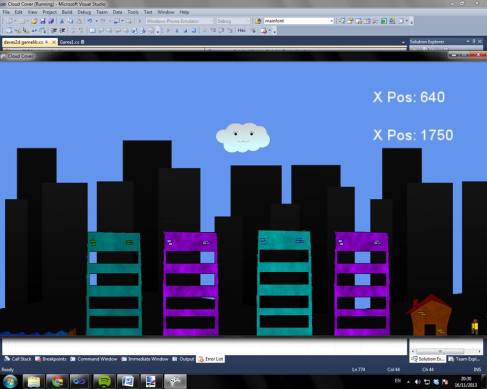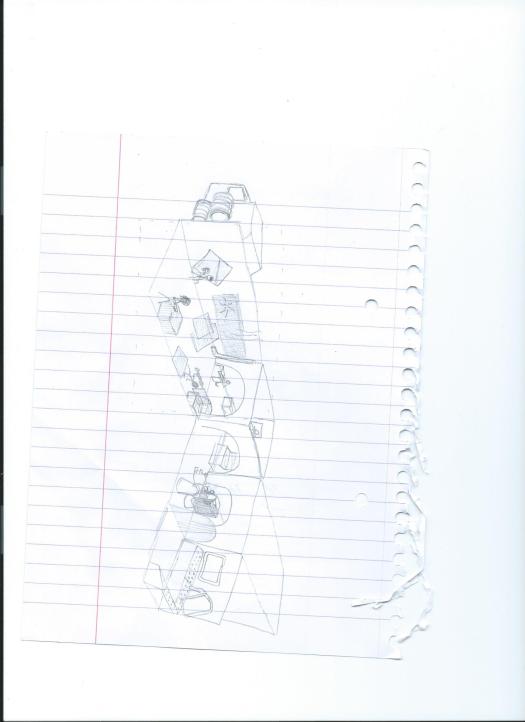Due to my impressively terrible immune system I have been ill for the past five days and been unable to muster the energy to really do anything. Because of this, I’ve been just catching up slowly on my lost course work (Thankfully not much because we just started) and doing what I can for the game design class.
This has left me in a situation where I haven’t been doing much coding because I can hardly focus and the stress of coding puts me in a dour mood.
Interestingly though, I have been playing (When I can muster the motivation) Jagged Alliance Back In Action. A frustratingly hard and stressful tactics game where you control a group of mercenaries being paid to liberate “Not Cuba” from a cruel dictator.
And on the console side, I’ve been playing Demon’s Souls and Dark Souls, the latter of which will not see the light of day again for many years. Both of which I needn’t comment on.
All of this has made me wonder, what is it about punishingly difficult games that seem to draw me to them like an addict. It can’t be the sense of overcoming challenges because I’ve been stuck in the same firefight in Jagged Alliance and the same boss fight in Demon’s Souls for weeks.
And that’s what bothers me, because for some time I thought that the pleasure in ‘hardcore’ games was the feeling of progress when you finally best the challenge.
But I’ve been batting my head against the same challenges over and over again, sometimes to the point of having to go and lie down to prevent damaging anything.
So what is it that makes this enjoyable?
I think it is the stimulation that you receive when placed against impossible odds. Knowing that somehow it must be possible. There has to be some way to best this virtual opponent.
For example, my current scenario in Jagged Alliance has me pinned down in a garage, two of my three mercenaries can barely stand never mind move and the last one is terrible with a rifle.
Outside are ten soldiers, equipped with far better weaponry and armour. They are content to sit behind cover and watch the exits, because they are getting paid by the hour, unlike us.
I have logged almost ten hours on this situation and only two minutes of game time has passed. Hours of butting heads with an opponent who holds all the cards.
And I enjoy it, because it is a challenge that requires great thought, great risk and most importantly, perseverance.
But how do we make this challenge?
After discovering what I enjoyed about the game I began asking myself,
“How would I recreate this feeling? And more importantly, how do I ensure it is fun?”
Well, I’ve been thinking on it and I’ve came up with a few rules the experience has to follow.
1) It must never be a cheap reason the player dies.
If the player dies it has to be because they failed to react, didn’t think properly or failed for some other reason that could have been avoided. This means, traps must be visible, even if it is only a tiny tell. A good example of this is the mimic from Dark Souls which looks identical to a normal chest except that its chain bends the opposite way.
2) Enemies should have visual tells of what they are capable of.
It should be obvious what an enemy’s strengths and capabilities are just from looking at them. Jagged Alliance is a good example of this as you are able to tell what an enemy is capable of just by what they are holding. An enemy has an axe? Shoot them from a distance. Sniper? Sneak up and take their range benefit.
Demon’s Souls has a more play and learn style as some enemies have tricky appearances. The silver skeletons are good examples of this as they first appear to be normal enemies until they start rolling around like a much deadlier version of Sonic. This can be fine if its explained early, the first of these skeletons is only a few steps from the start of the level.
3) Punishment for failure in games like these can not be too severe.
This one is fairly self explanatory, if Demon’s Souls had perma-death no one would play it. If Jagged Alliance had long loading screens, it would be too frustrating to keep retrying.
When making on difficult games it is important that you keep the player involved. Never lock them out.
There are also a few things the game can do to keep the player motivated, read that as foaming at the mouth with rage.
“Lower the difficulty now?”
A sure way to kick the player into not giving up is to challenge their skills by having the game ask them, usually condescendingly, if they want to lower the difficult setting.
Usually this motivates me enough to complete the level even
One I haven’t seen done, but I expect will become popular on the ps4.
“Ask for help?”
With the ps4’s new share button and the ability to have a friend take over your game to get you past a difficult part, I feel that this “Ask for help” mechanic will be very useful for crueller developers. It is a horrible feeling having to admit to a friend that you are stuck and even worse when they breeze through it with nary a thought. Having the game ask you if you want to phone Fraser or Shanice for help would be the ultimate motivator.
So yeah, that’s what I’ve been thinking about recently. Hope you enjoyed and I apologise for any mistakes as I’m having to type most of this with my eyes closed.

